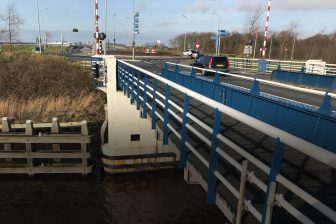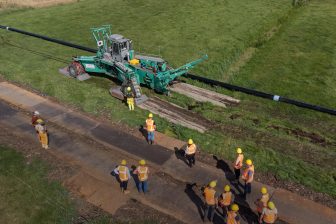Performance of Network Rail shows improvement
Monitoring of Network Rail’s performance shows continued steady improvement
London, United Kingdom – The latest edition of the Network Rail Monitor, the quarterly report by the Office of Rail Regulation (ORR) on Network Rail’s performance, is published today with a companion edition for Scotland. The report covers January to March 2006 and also looks at the full year performance. Also published today is the ORR Annual Report for the financial year 2005-06.
Bill Emery, Chief Executive of ORR said:
“I am pleased to report that, in the last quarter, Network Rail’s performance against most key measures continued to improve. This concludes a year in which steady progress has been made in train punctuality and its stewardship of the network.
“There are still a considerable number of challenges ahead, particularly developing Network Rail’s partnership with its customers and suppliers. Network Rail has made progress in its new responsibilities for industry planning but there is some way to go as shown for instance by the failure to document network capability adequately.”
Commenting on ORR’s Annual Report, Bill Emery added:
“For ORR, the past year has been dominated by the transfer of safety regulation and we worked hard to ensure this was a smooth transition. We will carry out our functions in the coming year as the integrated safety and economic regulator to help ensure the industry delivers a safe, high performing, efficient and developing railway.”
The Network Rail Monitor (Great Britain) for the fourth quarter of 2005–06 (8 January to 31 March 2006) shows:
- Safety: In the year ending 31 March 2006 the safety of the rail network, as measured by the train accident Precursor Indicator Model (PIM) has shown a slight deterioration. The largest contributor to the risk of train accidents is misuse of level crossings by road users.
- Train Performance: Good progress has been made, by Network Rail and its partners, in improving punctuality. The Public Performance Measure (PPM) of 86.4% in the year is up from 85.5% (updated) at the end of Q3 and up from 83.6% last year. Over the network punctuality (on a moving annual average basis) is now at its highest level since October 2000. However, there remain some geographical variations. In particular, the Western route has not performed as well. The Office of Rail Regulation (ORR) is nearing completion of its review into the reasons behind this and will follow up to ensure that there is an action plan in place to address the issues arising from the investigation.
- Infrastructure Assets: There has been an overall improvement in asset condition during the year. Asset failures caused 7.2% fewer delay minutes than in 2004-05. The Asset Stewardship Index (ASI) ended the year 5.9% better than target. However, ORR is analysing some of the specific infrastructure asset issues connected with the Western route investigation and with the emergency blockade of the Settle to Carlisle line in March 2006.
- Expenditure: For the full year, expenditure on operating, maintaining, renewing and enhancing the network was £340 million (6%) below the ACR2003 determination. Network Rail has said that this underspend is due to both deferral of activity and some unit cost efficiencies. In Q4, expenditure was £108m (8%) above budget and £91 million (6%) above the level forecast at the end of Q3. The overspend in Q4 is mainly due to back loading of renewals expenditure.
- West Coast Main Line Route Modernisation: The infrastructure for the December 2005 timetable has been delivered. Network Rail is developing a phased programme to implement the full scope of journey time improvements starting from the timetable change in June 2006 and planned to be substantially complete by December 2008. The significant over-run of the blockade between Sandbach and Wilmslow is of concern and we are examining the background to this.
- Customer Satisfaction: Network Rail published the results of its annual satisfaction survey of TOCs, FOCs and suppliers. These results showed all three groups to be dissatisfied, overall, with their relationship with Network Rail (albeit marginally for suppliers). Network Rail has identified that this is a key area to be addressed and ORR expects to see some significant improvement as a result.
The Network Rail Monitor (Scotland) for the fourth quarter of 2005–06 (8 January to 31 March 2006) shows:
- Train Performance: First ScotRail performance on the Public Performance Measure was 85.8% in the year up from 83.1% last year. Network Rail was 5% over its own internal target for delay minutes. However performance is beginning to improve significantly and Network Rail beat the indicative regulatory target for the quarter and for the full year for delay minutes in Scotland.
- Infrastructure Assets: There were slightly fewer infrastructure failures in the year than in 2004-05, although the improvement is rather less than for the network as a whole.
- Expenditure: For the year as a whole, expenditure in Scotland was £23m (6%) below the budget of £401 million. In Q4, expenditure was £14m (13%) above the budget and £16m (15%) above the level forecast at the end of Q3.
The ORR Annual Report for 2005-06 summarises the work of the office over the past year. Highlights have included:
- Safety regulation: Successful transfer of responsibility for rail safety regulation and Her Majesty’s Railway Inspectorate from the Health and Safety Executive to ORR.
- Periodic Review: Development of the programme and strategy for the 2008 periodic review of Network Rail funding and charges.
- Network Rail: Continued improvement in monitoring framework and successful recovery of T-12 advanced timetable information. Action to ensure effective documentation of network capability.
- Track access: Key decisions including 10 year track access agreement for English, Welsh and Scottish Railway and decision to agree new Sunderland to London services operated by Grand Central Railway.
- 1. The Network Rail Monitor (Great Britain) and a commentary is available in related links on www.rail-reg.gov.uk
- 2. The Network Rail Monitor (Scotland) and a commentary is available. Railway outputs in Scotland will be funded separately by the Scottish Executive from 1 April 2006.
- 3. The consultation document Network Rail Monitor is available.
- 4. The ORR Annual Report for 2005–2006 is available.
U las zojuist één van de gratis premium artikelen
Onbeperkt lezen? Profiteer nu van de introductieaanbieding voor € 10,- per maand.
Bent u al abonnee?



